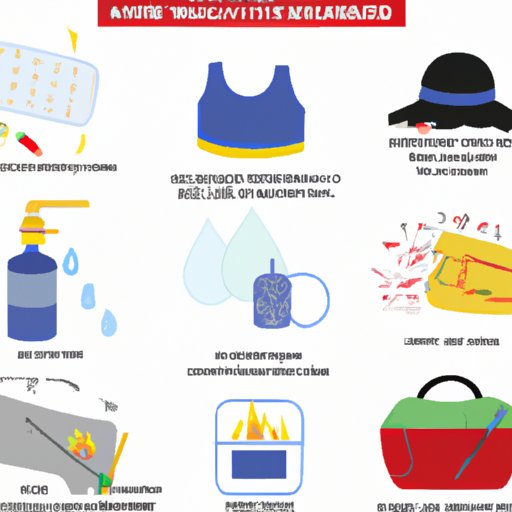Introduction
Excessive sweating can be an embarrassing and uncomfortable problem for many people. Whether it’s sweaty palms, underarms, or feet, uncontrollable sweating can impact one’s confidence and quality of life. However, there are many strategies and products available to help reduce sweating and manage its effects. In this article, we will explore various tips and strategies to help readers control their sweating.
Healthy habits that help reduce sweating
Healthy habits play a significant role in regulating body temperature and reducing sweating. Good hygiene habits, such as taking showers regularly and wearing clean clothing, can help prevent the accumulation of bacteria and sweat on the skin. A balanced and healthy diet can help regulate the body’s metabolism and reduce triggers for sweating, especially spicy and processed foods. Drastically reducing or eliminating caffeine consumption can also help control excessive sweating.
Staying adequately hydrated by drinking plenty of water helps to regulate body temperature, flush out toxins and reduce sweating. Regular exercise to improve overall fitness helps to control body temperature and regulate sweating. Additionally, engaging in activities that promote weight loss can help reduce sweating as well.
Sweat-preventing products
Antiperspirants and deodorants are common sweat-preventing products used to control sweating. Antiperspirants work by blocking sweat ducts, while deodorants only mask body odor. There are different types of antiperspirants available, such as sprays, roll-ons and sticks that can be applied directly to the skin. They come in regular strength and clinical strength formulations. It is best to look for antiperspirants with aluminum-based ingredients, as they offer great benefits.
When choosing the right sweat-preventing product, it is important to take into consideration the level of sweating and the effectiveness of the product. People with excessive sweating should consider clinical strength products. Also, it is essential to pay attention to side effects of the product being used, such as redness, itching, and rash on the skin.
Medical procedures
For those who experience severe sweating and haven’t had success with lifestyle changes or sweat-preventing products, there are medical procedures such as Botulinum toxin injections (Botox), iontophoresis, and surgery. Botox injections are suitable for those with excessive sweating in the underarms. While this procedure offers a temporary solution, its effects may last up to six months.
Iontophoresis is an FDA-approved procedure that uses electrical currents to reduce sweating. During the procedure, affected areas such as hands, feet, or underarms are soaked in water while electric currents are passed through it. This can be very effective.
Surgery is considered the last option when all other treatments and lifestyle changes haven’t worked. The most common surgery for excessive sweating is thoracic sympathectomy. Sympathetic nerves that are responsible for sweating are cut, which helps to reduce sweating. However, this procedure has potential side effects, so it is essential to consider the benefits and the risks before undergoing this surgery.
Lifestyle tips
Adopting everyday lifestyle changes can also help reduce sweating. Wearing loose-fitting clothing made from breathable fabrics, such as cotton, can help keep the body cool and regulate temperature. Wearing lighter-colored clothing can also help reduce the noticeability of sweat stains, while darker colors often accentuate sweat stains.
Avoiding triggers such as spicy foods, alcohol and caffeine can also help reduce sweating. It is also important to maintain a clean and cool environment.
Managing stress and anxiety can also help reduce sweating. Meditation, deep breathing exercises, and other relaxation techniques can help reduce stress and anxiety, which can be a trigger for excessive sweating.
Natural remedies
Natural remedies are another alternative to help reduce sweating. Sage tea is known for its ability to reduce excessive sweating; it can be consumed as a tea or used as a topical treatment by soaking a cotton ball in it and then applying it to affected areas. Apple cider vinegar has a similar effect and can be used to tone the skin. Witch hazel is an essential oil that can be applied topically to the skin to reduce sweating.
It is essential to consult with a healthcare professional before trying any natural remedies, as some can interact with medications or may not be suitable for people with underlying health conditions.
Conclusion
In conclusion, excessive sweating is a common problem that can be managed with lifestyle changes, sweat-preventing products, medical procedures, and natural remedies. Experiment with different strategies and products to find the ones that work best for you.
Remember to stay hydrated, exercise regularly, maintain good hygiene habits, avoid triggers, and manage stress and anxiety. It is also essential to consult with a healthcare professional before making any medical or natural remedy decisions.
